Driving Laws by Country
Driving laws and regulations vary country to country, and it can be difficult to know what laws apply where. These are some of the top travel destinations for UK tourists, and the driving laws you’ll need to be aware of for each.
For the most detailed and up-to-date guidance, contact the local authorities of the country you’re visiting.
Side of the road: Right
Emergency phone number: 112
Minimum legal driving age: 18
Blood alcohol level limit in Belgium: 0.05%
For reference, the UK blood alcohol level limit is 0.08%.
What are the speed limits in Belgium?
- Residential areas: 20km/h
- Urban areas: 50km/h max (30km/h around schools and on streets with cycle paths)
- Outside built-up areas: 90km/h (70km/h in the Flemish region)
- Motorways: 120km/h
What documents do I need to drive in Belgium?
- Your full, valid UK driving licence
- Proof of ID (such as your passport)
- Motor insurance certificate
- Original V5c registration document (not a copy)
In the EU, Switzerland, Norway, Iceland, and Liechtenstein, you won’t need an IDP if you have a photocard driving license issued in the UK. You may need one if you have a paper driving licence, or your license was issued in Gibraltar, Guernsey, Jersey or the Isle of Man. Find out more here.
What do I need in my car in Belgium?
- A UK sticker – If your vehicle does not have a UK identifier within the number plate, you’ll need to display a UK (not GB) sticker
- A warning triangle – Required if you’re driving a vehicle with four or more tyres
- First aid kit and fire extinguisher – These are compulsory for vehicles registered in Belgium but advised for all vehicles.
- Reflective jackets – You must wear one if you’re involved in an accident, break down, or exit your vehicle on a road where stopping or parking is prohibited
- Headlamp beam deflectors – UK headlights are angled for driving on the left, so you’ll need to deflect your beans to avoid dazzling other drivers
The Halfords Motoring Abroad kit contains everything you need to drive in most European countries, in one handy pack. It contains universal headlamp adaptors, a warning triangle, reflective vests, a UK sticker, and a first-aid kit, all in a handy storage bag with Velcro boot-fixing tabs.
Shop the Halfords Motoring Abroad Kit
Can I rent a car in Belgium?
- You must be at least 19 to hire a car in Belgium
- You’ll need a full, valid UK driving license, as well as a second form of ID such as your passport
- The minimum term you need to have held your license for can vary by rental company, so check before you travel
Belgian road signs:
Across the EU, road signs are typically standardised according to the Vienna Convention, in order to make it easier and safer for foreign visitors. However, there will be some design differences.
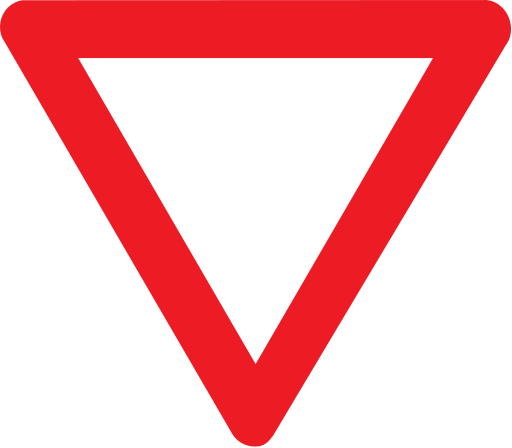
Give way
Warning
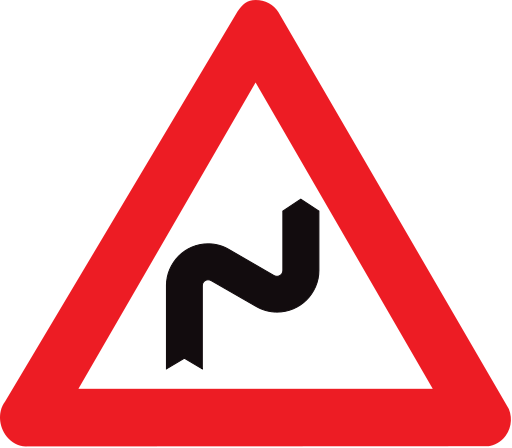
Series of curves
Prohibitory

Speed limit
Indication

No through road
Mandatory
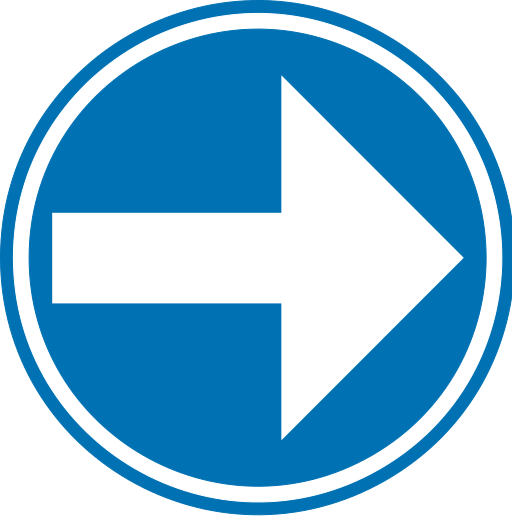
Turn right
Other important information for driving in Belgium:
- Motorcyclists must wear protective clothing at all times, including gloves, a long-sleeved jacket, and boots that protect your ankles
- Foreign disabled permits can be used in Belgium
- Motorways in Belgium are toll-free, except for vehicles over 3.5 tonnes
Side of the road: Right
Emergency phone number: 112
Minimum legal driving age: 18
Blood alcohol level limit in Croatia:
- Drivers under 25: 0%
- Drivers over 25: 0.05%
For reference, the UK blood alcohol level limit is 0.08%.
What are the speed limits in Croatia?
- Motorways: 130km/h
- In built-up areas: 50km/h
- Outside built-up areas: 90km/h – 110km/h depending on local signage
If you’re under 25, you’ll need to drive slower:
- Motorways: 120km/h
- In built-up areas: 50km/h
- Outside built-up areas: 80km/h – 100km/h depending on local signage
If you’re towing a caravan, the speed limits are different (regardless of age):
- Motorways: 90km/h
- In built-up areas: 50km/h
- Outside built-up areas: 80km/h
What documents do I need to drive in Croatia?
- Your full, valid UK driving licence
- Proof of ID (such as your passport)
- Motor insurance certificate
- Original V5c registration document (not a copy)
In the EU, Switzerland, Norway, Iceland and Liechtenstein, you won’t need an IDP if you have a photocard driving license issued in the UK. You may need one if you have a paper driving licence, or your license was issued in Gibraltar, Guernsey, Jersey or the Isle of Man. Find out more here.
What do I need in my car in Croatia?
- A UK sticker – If your vehicle does not have a UK identifier within the number plate, you’ll need to display a UK (not GB) sticker
- A warning triangle – If you break down, you’ll need to place it 50 feet from the back of your car
- First aid kit – First aid provisions are a legal requirement in all vehicles
- One reflective jacket for each occupant – You must carry them in your vehicle at all times and wear one if you get out of the vehicle during an emergency or a breakdown
- Headlamp beam deflectors – UK headlights are angled for driving on the left, so you’ll need to deflect your beans to avoid dazzling other drivers
- Spare bulbs – you’ll need to have a spare set of headlight bulbs in case one or both stop working (Xenon, neon and LED lights are exempt)
The Halfords Motoring Abroad kit contains everything you need to drive in most European countries, in one handy pack. It contains universal headlamp adaptors, a warning triangle, reflective vests, a UK sticker, and a first-aid kit, all in a handy storage bag with Velcro boot-fixing tabs.
Shop the Halfords Motoring Abroad Kit
Can I rent a car in Croatia?
- You must be at least 21 to hire a car in Croatia
- You’ll need a full, valid UK driving license, as well as a second form of ID such as your passport
- You’ll need to have held your license for over a year
Croatian road signs:
Across the EU, road signs are typically standardised according to the Vienna Convention, in order to make it easier and safer for foreign visitors. However, there will be some design differences.
Priority
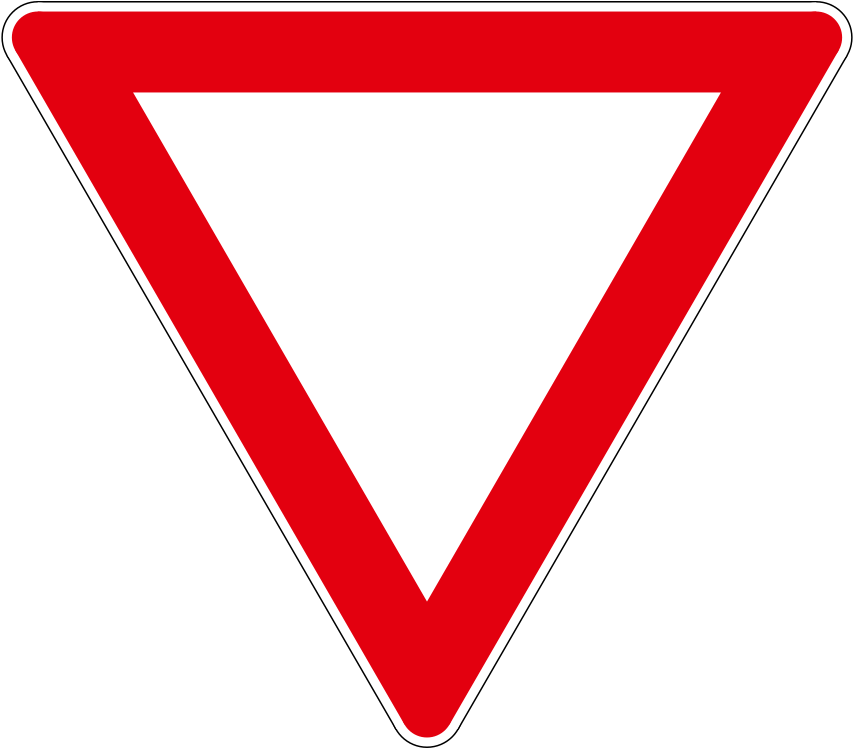
Give way
Warning
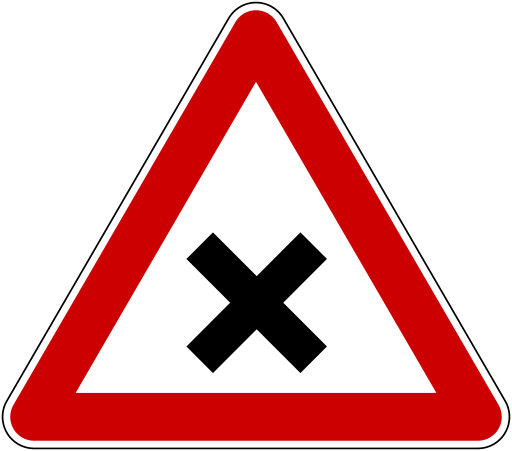
Crossroads – give way to the right
Prohibitory
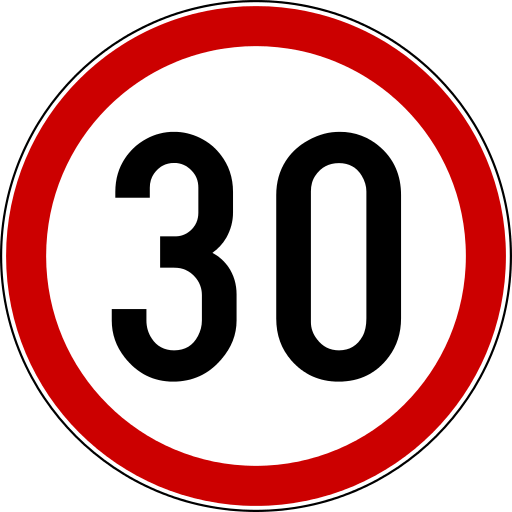
Speed limit
Indication

Recommended speed
Mandatory

Turn right
Other important information for driving in Croatia:
- If you’re visiting between November and April, you’ll need to fit winter tyres and use your lights during the day.
- To get 10% off toll prices and skip the bigger queues, you can sign up to the Electronic Toll Collection scheme and pre-pay money onto a contactless device fitted to your car.
- If you’re towing a caravan, you’ll need two warning triangles.
Side of the road: Right
Emergency phone number: 112
Minimum legal driving age: 18
Blood alcohol level limit in France:
- New drivers (less than three years’ experience): 0.02%
- Experienced drivers: 0.05%
For reference, the UK blood alcohol level limit is 0.08%.
What are the speed limits in France?
Normal conditions:
- Motorways: 130 km/h (minimum speed of 80 km/h in the outside lane)
- Priority roads and dual carriageways: 110 km/h
- Other roads: 80 km/h
- Built-up areas: 50 km/h
Poor weather:
- Motorways: 110 km/h
- Priority roads and dual carriageways: 100 km/h
- Other roads: 70 km/h
- Built-up areas: 50 km/h
The speed limits will change if you’re towing a caravan or trailer and vary based on the total weight. You can find the full list of speed limits here.
What documents do I need to drive in France?
- Your full, valid UK driving licence
- Proof of ID (such as your passport)
- Motor insurance certificate
- Original V5c registration document (not a copy)
In the EU, Switzerland, Norway, Iceland and Liechtenstein, you won’t need an IDP if you have a photocard driving license issued in the UK. You may need one if you have a paper driving licence, or your license was issued in Gibraltar, Guernsey, Jersey or the Isle of Man. Find out more here.
What do I need in my car in France?
- A UK sticker – If your vehicle does not have a UK identifier within the number plate, you’ll need to display a UK (not GB) sticker
- A warning triangle – Required if you’re driving a vehicle with four or more tyres
- One reflective jacket for each occupant – You must keep them within easy reach at all times and wear one if you get out of the vehicle during an emergency or a breakdown
- Headlamp beam deflectors – UK headlights are angled for driving on the left, so you’ll need to deflect your beans to avoid dazzling other drivers
- Spare bulbs – you’ll need to have a spare set of headlight bulbs in case one or both stop working (Xenon, neon and LED lights are exempt)
- Breathalyser – while you’re no longer legally required to carry a breathalyser kit in France, it is still strongly advised. The French legal alcohol limit is lower than the UK’s, and it’s best to be safe.
The Halfords Motoring Abroad kit contains everything you need to drive in most European countries, in one handy pack. It contains universal headlamp adaptors, a warning triangle, reflective vests, a UK sticker, and a first-aid kit, all in a handy storage bag with Velcro boot-fixing tabs.
Shop the Halfords Motoring Abroad Kit
Can I rent a car in France?
- You must be at least 21 to hire a car in France (some companies may charge extra if you’re under 25)
- You’ll need a full, valid UK driving license, as well as a second form of ID such as your passport
- You must have a credit card in your name
- Some agencies require you to have held your license for over a year
- Some agencies will require an IDP
French road signs:
Across the EU, road signs are typically standardised according to the Vienna Convention, in order to make it easier and safer for foreign visitors. However, there will be some design differences.
Priority
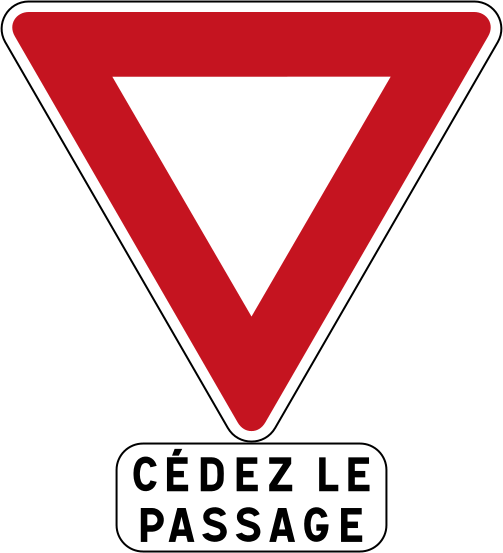
Give way
Warning
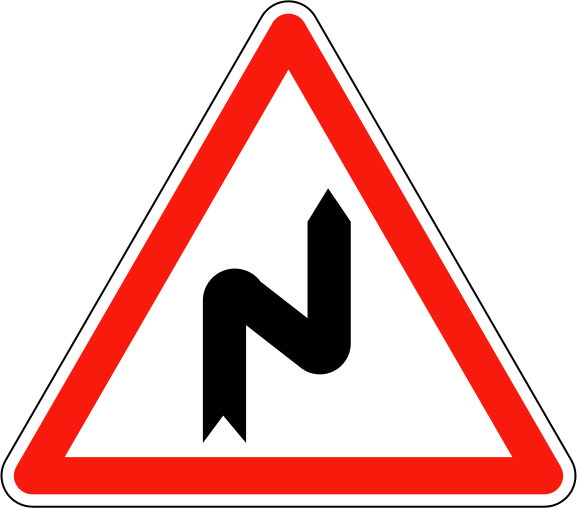
Series of curves
Prohibitory
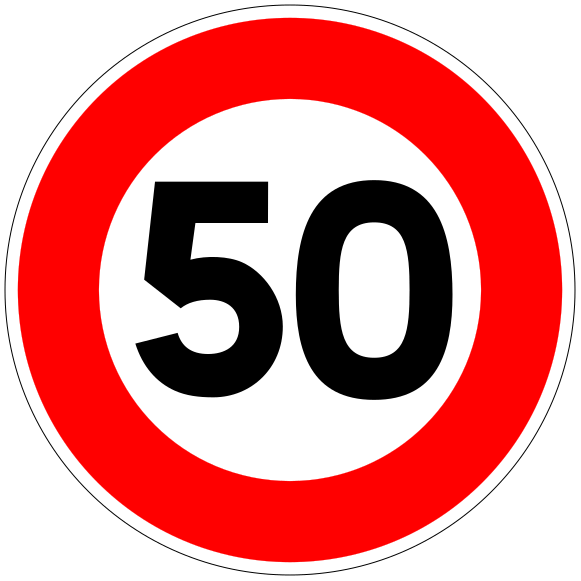
Speed limit
Indication
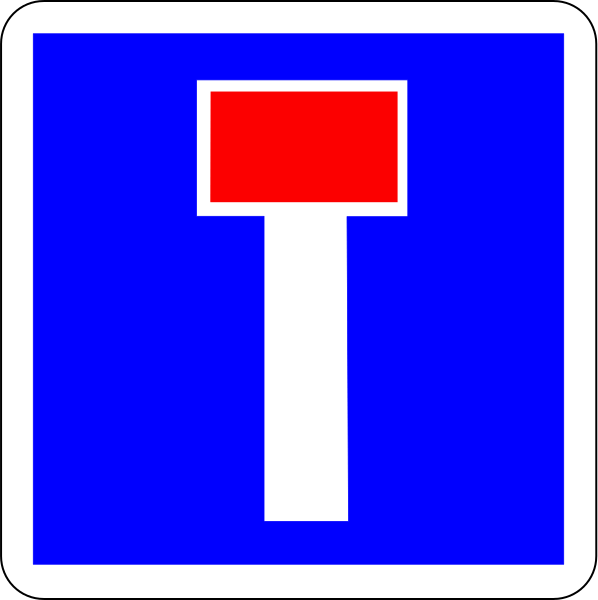
No through road
Mandatory
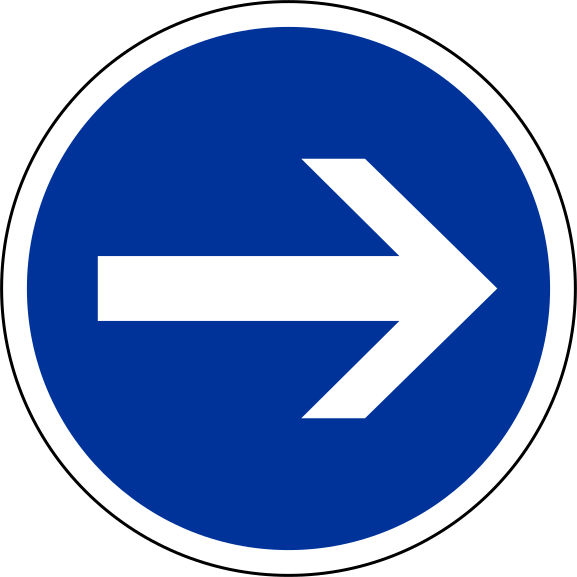
Turn right
Other important information for driving in France:
- Between November and March, you’ll need winter tyres or snow chains to drive in mountainous areas such as the Alps, the Massif Central, the Jura Mountains, the Pyrenees and the Vosges.
- French motorways (or autoroutes) are privately owned, meaning it’s against the law to call your own roadside assistance company to collect you if you break down. You’ll need to use the orange telephone boxes located along the autoroute to call the police or an official breakdown service.
- Motorbikes must have dipped headlights on at all times, day or night.
Side of the road: Right
Emergency phone number: 112
Minimum legal driving age: 18
Blood alcohol level limit in Germany:
- New drivers (less than two years’ experience), and drivers under 21: 0%
- Experienced drivers and drivers over 21: 0.05%
For reference, the UK blood alcohol level limit is 0.08%.
What are the speed limits in Germany?
- Motorways: Many parts of the Autobahn have no official speed limit, but the recommended maximum speed is 130 km/h (you may only drive on German motorways if your vehicle has a design speed of more than 60 km/h, or 37mph)
- Dual carriageways: 130 km/h
- Main roads: 100 km/h
- Built-up areas: 50 km/h
What documents do I need to drive in Germany?
- Your full, valid UK driving licence
- Proof of ID (such as your passport)
- Motor insurance certificate
- Original V5c registration document (not a copy)
In the EU, Switzerland, Norway, Iceland and Liechtenstein, you won’t need an IDP if you have a photocard driving license issued in the UK. You may need one if you have a paper driving licence, or your license was issued in Gibraltar, Guernsey, Jersey or the Isle of Man. Find out more here.
What do I need in my car in Germany?
- A UK sticker – If your vehicle does not have a UK identifier within the number plate, you’ll need to display a UK (not GB) sticker
- First aid kit – First aid provisions are a legal requirement in all vehicles
- A warning triangle – Required if you’re driving a vehicle with four or more tyres
- One reflective jacket for each occupant – You must wear a reflective jacket if you get out of the vehicle during an emergency or a breakdown
- Headlamp beam deflectors – UK headlights are angled for driving on the left, so you’ll need to deflect your beans to avoid dazzling other drivers
- Winter tyres and snow chains – You must use winter tyres during winter weather conditions like snow and black ice, and snow chains are required in certain regions
The Halfords Motoring Abroad kit contains everything you need to drive in most European countries, in one handy pack. It contains universal headlamp adaptors, a warning triangle, reflective vests, a UK sticker, and a first-aid kit, all in a handy storage bag with Velcro boot-fixing tabs.
Shop the Halfords Motoring Abroad Kit
Can I rent a car in Germany?
- You must be at least 18 to hire a car in Germany
- You’ll need a full, valid UK driving license, as well as a second form of ID such as your passport
- Some agencies require you to have held your license for 1 to 3 years
German road signs:
Across the EU, road signs are typically standardised according to the Vienna Convention, in order to make it easier and safer for foreign visitors. However, there will be some design differences.
Priority
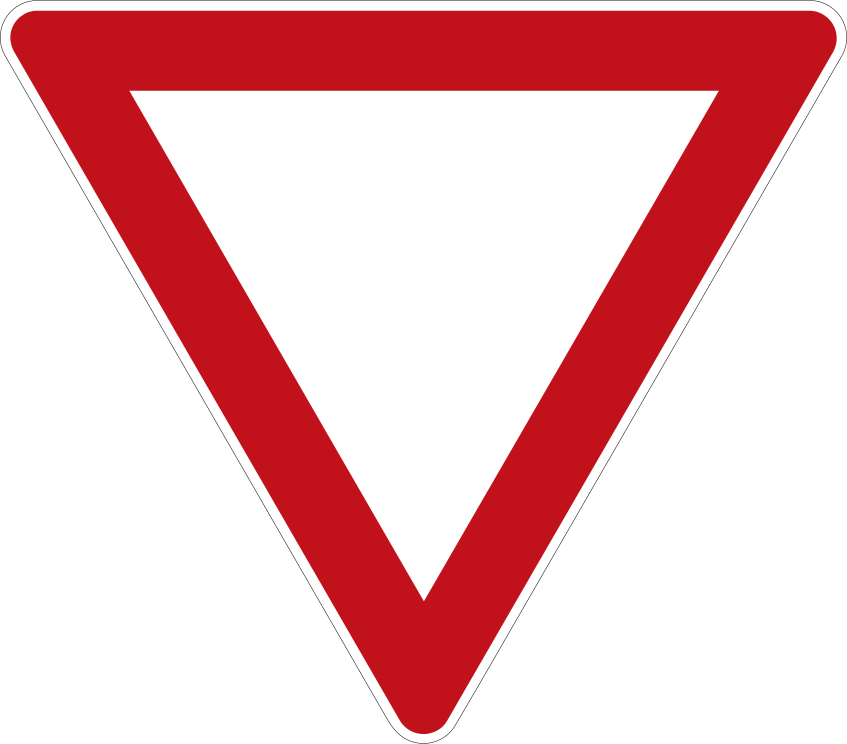
Give way
Warning
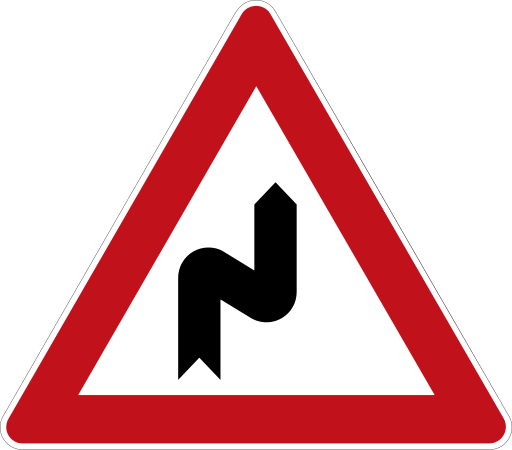
Series of curves
Prohibitory
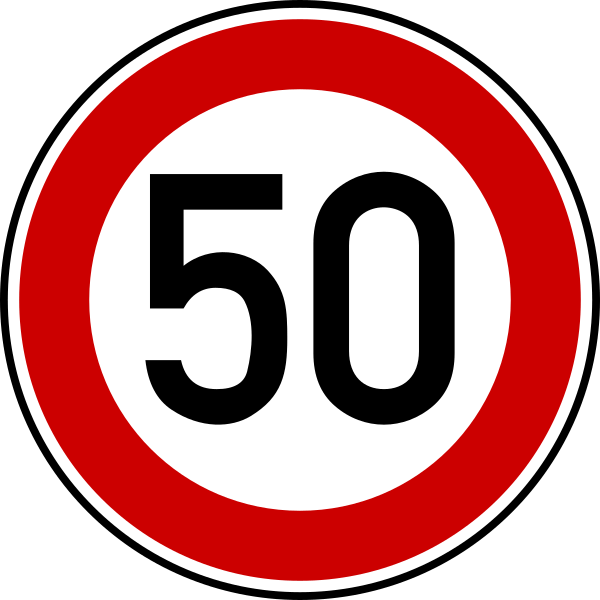
Speed limit
Indication
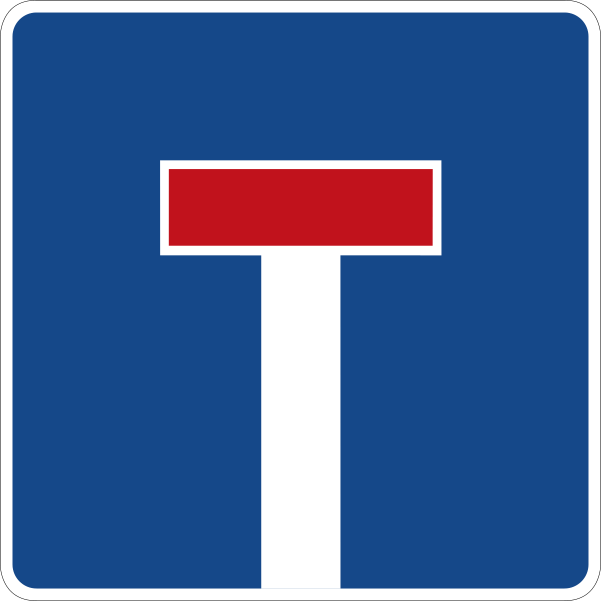
No through road
Mandatory
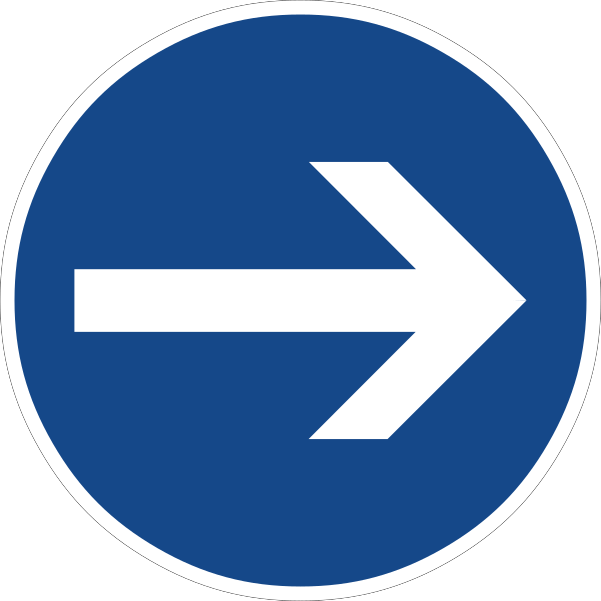
Turn right
Other important information for driving in Germany:
- UK-issued disabled parking permits are valid in Germany
- Children under 12 or below 150cm tall cannot sit in the front seat of a car
- You cannot park facing oncoming traffic
Side of the road: Right
Emergency phone number: 112
Minimum legal driving age: 18
Blood alcohol level limit in Greece:
- New drivers (less than two years’ experience): 0.02%
- Experienced drivers: 0.05%
For reference, the UK blood alcohol level limit is 0.08%.
What are the speed limits in Greece?
- Built-up areas: 50km/h
- Outside built-up areas: 90km/h – 110km/h depending on local signage
- Motorways: 130km/h
These speeds may vary by area, so check the local signage to be sure.
What documents do I need to drive in Greece?
- Your full, valid UK driving licence
- Proof of ID (such as your passport)
- Motor insurance certificate
- Original V5c registration document (not a copy)
In the EU, Switzerland, Norway, Iceland, and Liechtenstein, you won’t need an IDP if you have a photocard driving license issued in the UK. You may need one if you have a paper driving licence, or your license was issued in Gibraltar, Guernsey, Jersey or the Isle of Man. Find out more here.
What do I need in my car in Greece?
- A UK sticker – If your vehicle does not have a UK identifier within the number plate, you’ll need to display a UK (not GB) sticker
- First aid kit – First aid provisions are a legal requirement in all vehicles
- A warning triangle – Required if you’re driving a vehicle with four or more tyres
- One reflective jacket for each occupant – You must wear a reflective jacket if you get out of the vehicle during an emergency or a breakdown
- Headlamp beam deflectors – UK headlights are angled for driving on the left, so you’ll need to deflect your beans to avoid dazzling other drivers
- Fire extinguisher – Compulsory in every vehicle in case of a fire
The Halfords Motoring Abroad kit contains everything you need to drive in most European countries, in one handy pack. It contains universal headlamp adaptors, a warning triangle, reflective vests, a UK sticker, and a first-aid kit, all in a handy storage bag with Velcro boot-fixing tabs.
Shop the Halfords Motoring Abroad Kit
Can I rent a car in Greece?
- You must be at least 21 to hire a car in Greece
- You’ll need a full, valid UK driving license, as well as a second form of ID such as your passport
- You need to have held your license at least a year
Greek road signs:
Across the EU, road signs are typically standardised according to the Vienna Convention, in order to make it easier and safer for foreign visitors. However, there will be some design differences.
Priority
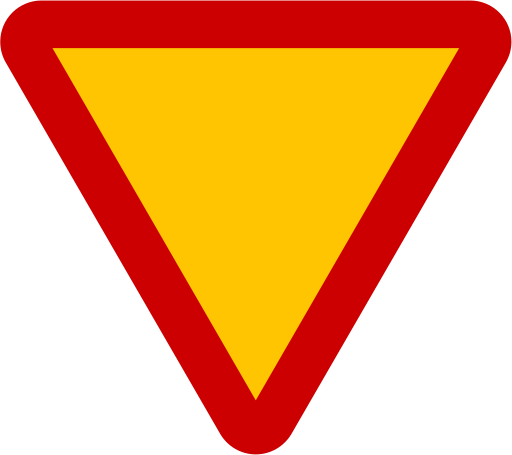
Give way
Warning
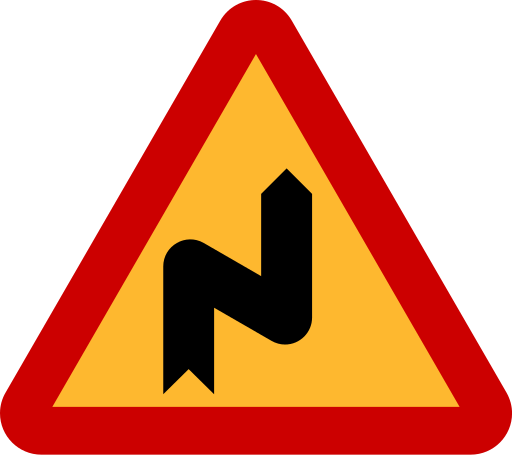
Series of curves
Prohibitory
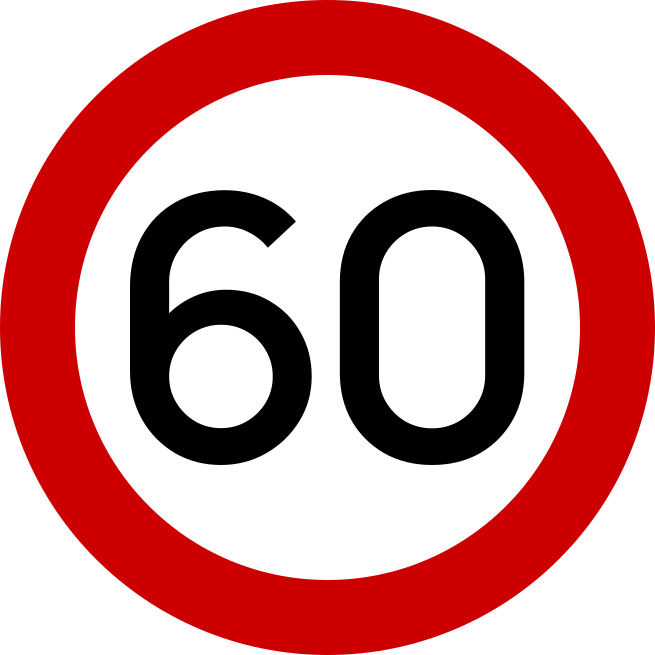
Speed limit
Indication

No through road
Mandatory
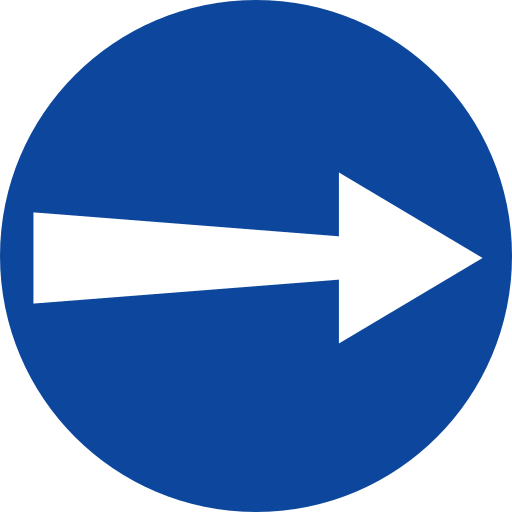
Turn right
Other important information for driving in Greece:
- In urban areas, sounding the horn is prohibited except in an emergency
- All major road signs will be written in both Greek and English
- Some toll booths will only take cash, so make sure you keep some change in your car
Side of the road: Left
Emergency phone number: 999 or 112
Minimum legal driving age: 17
Blood alcohol level limit in Ireland:
- New drivers (less than 2 years’ experience): 0.02%
- Experienced drivers: 0.05%
For reference, the UK blood alcohol level limit is 0.08%.
What are the speed limits in Ireland?
- Motorways: 120 km/h
- National roads: 100 km/h
- Regional roads: 80 km/h
- Urban areas: 50 km/h (30 km/h near schools)
What documents do I need to drive in Ireland?
- Your full, valid UK driving licence
- Motor insurance certificate
- Original V5c registration document (not a copy)
In the EU, Switzerland, Norway, Iceland, and Liechtenstein, you won’t need an IDP if you have a photocard driving license issued in the UK. You may need one if you have a paper driving licence, or your license was issued in Gibraltar, Guernsey, Jersey or the Isle of Man. Find out more here.
What do I need in my car in Ireland?
Ireland doesn’t require the same amount of motoring equipment as the rest of the EU, but we’d still recommend taking the following:
- A warning triangle
- Reflective jackets
- A fire extinguisher
- A first-aid kit
- Spare bulbs
- You do not need a GB or UK sticker to drive in Ireland
The Halfords Motoring Abroad kit contains everything you need to drive in most European countries, in one handy pack. It contains universal headlamp adaptors, a warning triangle, reflective vests, a UK sticker, and a first-aid kit, all in a handy storage bag with Velcro boot-fixing tabs.
Shop the Halfords Motoring Abroad Kit
Can I rent a car in Ireland?
- You must be at least 23 to hire a car in Ireland
- You’ll need a full, valid UK driving license, as well as a second form of ID such as your passport
- You need to have held your license for at least 2 years
Irish road signs:
Across the EU, road signs are typically standardised according to the Vienna Convention, in order to make it easier and safer for foreign visitors. However, there will be some design differences.
Priority

Give way
Warning

Series of curves
Prohibitory
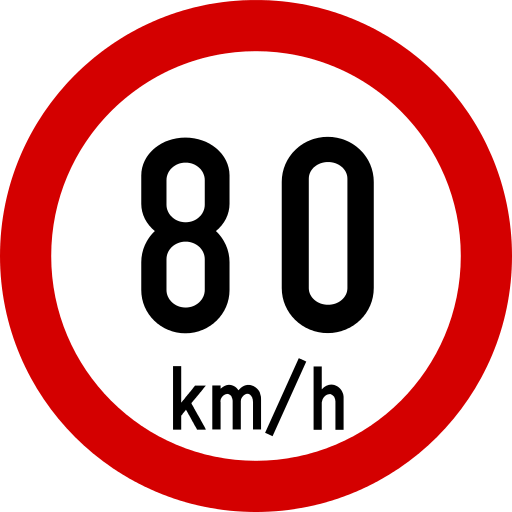
Speed limit
Indication
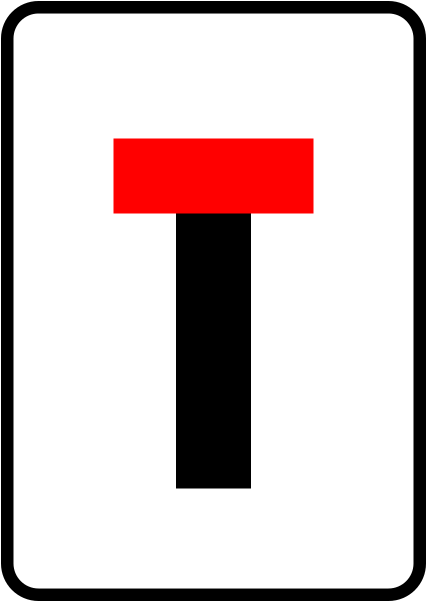
No through road
Mandatory
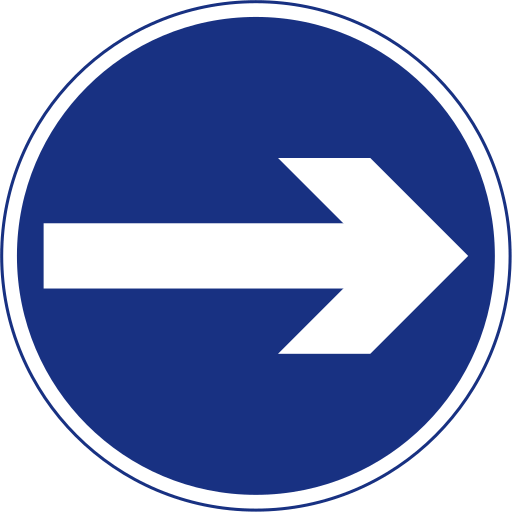
Turn right
Other important information for driving in Ireland:
- You must not use your horn between 11:30pm and 7am
- Children younger than 12 years old or below 135cm must sit in the back of the vehicle
- Most Irish poll booths don’t take card, so you’ll need to keep some cash in the car
Side of the road: Right
Emergency phone number: 112
Minimum legal driving age: 18
Blood alcohol level limit in Italy:
- New drivers (less than three years’ experience): 0%
- Experienced drivers: 0.05%
For reference, the UK blood alcohol level limit is 0.08%.
What are the speed limits in Italy?
- Motorways: 130 km/h (in poor weather conditions, this falls to 110 km/h)
- Dual carriageways: 130 km/h
- Main roads: 90km/h – 110 km/h depending on local signage
- Built-up areas: 50 km/h
What documents do I need to drive in Italy?
- Your full, valid UK driving licence
- Proof of ID (such as your passport)
- Motor insurance certificate
- Original V5c registration document (not a copy)
In the EU, Switzerland, Norway, Iceland, and Liechtenstein, you won’t need an IDP if you have a photocard driving license issued in the UK. You may need one if you have a paper driving licence, or your license was issued in Gibraltar, Guernsey, Jersey or the Isle of Man. Find out more here.
What do I need in my car in Italy?
- A UK sticker – If your vehicle does not have a UK identifier within the number plate, you’ll need to display a UK (not GB) sticker
- A warning triangle – Required in case of an accident or breakdown
- One reflective jacket for each occupant – You must wear a reflective jacket if you get out of the vehicle at the roadside, in built-up areas, at night, or in conditions of poor visibility
- Headlamp beam deflectors – UK headlights are angled for driving on the left, so you’ll need to deflect your beans to avoid dazzling other drivers
- A spare tyre - You must carry both a spare tyre and the tools to change it in case you pick up a puncture
The Halfords Motoring Abroad kit contains everything you need to drive in most European countries, in one handy pack. It contains universal headlamp adaptors, a warning triangle, reflective vests, a UK sticker, and a first-aid kit, all in a handy storage bag with Velcro boot-fixing tabs.
Shop the Halfords Motoring Abroad Kit
Can I rent a car in Italy?
- Many companies require drivers to be at least 23 hire a car in Italy, although some may rent to younger drivers
- You’ll need a full, valid UK driving license, as well as a second form of ID such as your passport
- You need to have held your license at least a year
Italian road signs:
Across the EU, road signs are typically standardised according to the Vienna Convention, in order to make it easier and safer for foreign visitors. However, there will be some design differences.
Priority

Give way
Warning

Series of curves
Prohibitory

Speed limit
Indication

No through road
Mandatory

Turn right
Other important information for driving in Italy:
- Dipped headlights must be used during the day outside of built-up areas, in poor visibility, and in tunnels
- Fines for serious offences committed between 10pm and 7am are increased by 30%
- You must park on the right-hand side of the road, except if the route is one-way
Side of the road: Right
Emergency phone number: 112
Minimum legal driving age: 18
Blood alcohol level limit in the Netherlands:
- New drivers (less than five years’ experience): 0.02%
- Experienced drivers: 0.05%
For reference, the UK blood alcohol level limit is 0.08%.
What are the speed limits in the Netherlands?
- In built-up areas: 50km/h
- Outside built-up areas: 80km/h – 100km/h depending on local signage
- Motorways: 130km/h
What documents do I need to drive in the Netherlands?
- Your full, valid UK driving licence
- Proof of ID (such as your passport)
- Motor insurance certificate
- Original V5c registration document (not a copy)
In the EU, Switzerland, Norway, Iceland, and Liechtenstein, you won’t need an IDP if you have a photocard driving license issued in the UK. You may need one if you have a paper driving licence, or your license was issued in Gibraltar, Guernsey, Jersey or the Isle of Man. Find out more here.
What do I need to keep in my car in the Netherlands?
- A UK sticker – If your vehicle does not have a UK identifier within the number plate, you’ll need to display a UK (not GB) sticker
- A warning triangle – While it’s not compulsory to have a warning triangle in your car, a parked vehicle not sufficiently lit by streetlights or its own beams must use a warning triangle at night
- Headlamp beam deflectors – UK headlights are angled for driving on the left, so you’ll need to deflect your beans to avoid dazzling other drivers
- Reflective jackets – While not a legal requirement, it is highly recommended that you have hi-vis jackets in your car in case of an emergency
The Halfords Motoring Abroad kit contains everything you need to drive in most European countries, in one handy pack. It contains universal headlamp adaptors, a warning triangle, reflective vests, a UK sticker, and a first-aid kit, all in a handy storage bag with Velcro boot-fixing tabs.
Shop the Halfords Motoring Abroad Kit
Can I rent a car in the Netherlands?
- Many companies require drivers to be at least 21 hire a car in the Netherlands
- You’ll need a full, valid UK driving license, as well as a second form of ID such as your passport
- You need to have held your license for at least 1-2 years, depending on the rental company
Dutch road signs:
Across the EU, road signs are typically standardised according to the Vienna Convention, in order to make it easier and safer for foreign visitors. However, there will be some design differences.
Priority
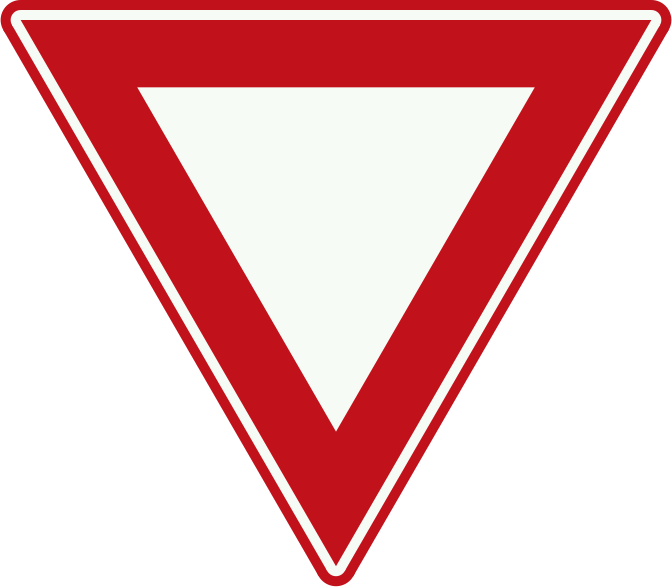
Give way
Warning
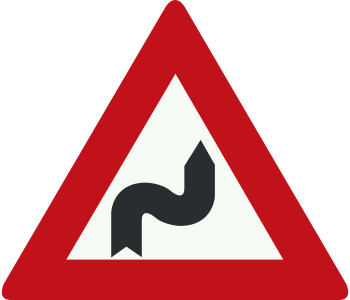
Series of curves
Prohibitory
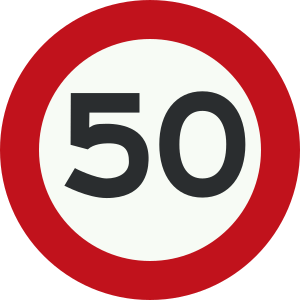
Speed limit
Indication
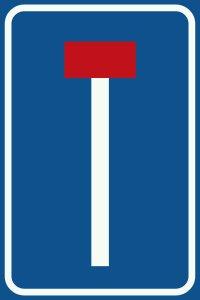
No through road
Mandatory
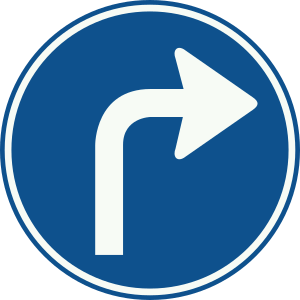
Turn right
Other important information for driving in the Netherlands:
- Trams have priority over motor vehicles, and you mustn’t overtake one if it stops to pick up passengers
- If you have a sat nav with a speed camera detector, this function must be turned off
- Foreign disability parking permits can be used in the Netherlands
Side of the road: Right
Emergency phone number: 112
Minimum legal driving age: 18
Blood alcohol level limit in Poland: 0.02%
For reference, the UK blood alcohol level limit is 0.08%.
What are the speed limits in Poland?
- Residential areas: 20km/h
- Built-up areas: 50km/h between 5am and 11pm, 60km/h between 11pm and 5am
- Outside built-up areas: 90km/h – 120km/h depending on local signage
- Motorways: 140km/h
What documents do I need to drive in Poland?
- Your full, valid UK driving licence
- Proof of ID (such as your passport)
- Motor insurance certificate
- Original V5c registration document (not a copy)
In the EU, Switzerland, Norway, Iceland, and Liechtenstein, you won’t need an IDP if you have a photocard driving license issued in the UK. You may need one if you have a paper driving licence, or your license was issued in Gibraltar, Guernsey, Jersey or the Isle of Man. Find out more here.
What do I need in my car in Poland?
- A UK sticker – If your vehicle does not have a UK identifier within the number plate, you’ll need to display a UK (not GB) sticker
- A warning triangle – Compulsory in vehicles with four or more wheels
- Reflective jackets - While it’s not compulsory to have reflective jackets in your car, you could be fined for not wearing one at the roadside in poor conditions or at night so it’s best to have some to hand
- Headlamp beam deflectors – UK headlights are angled for driving on the left, so you’ll need to deflect your beans to avoid dazzling other drivers
- A fire extinguisher - Compulsory in every vehicle in case of a fire
The Halfords Motoring Abroad kit contains everything you need to drive in most European countries, in one handy pack. It contains universal headlamp adaptors, a warning triangle, reflective vests, a UK sticker, and a first-aid kit, all in a handy storage bag with Velcro boot-fixing tabs.
Shop the Halfords Motoring Abroad Kit
Can I rent a car in Poland?
- You must be at least 21 to hire a car in Poland
- You’ll need a full, valid UK driving license, as well as a second form of ID such as your passport
- You need to have held your license for at least 1 year
Polish road signs:
Across the EU, road signs are typically standardised according to the Vienna Convention, in order to make it easier and safer for foreign visitors. However, there will be some design differences.
Priority
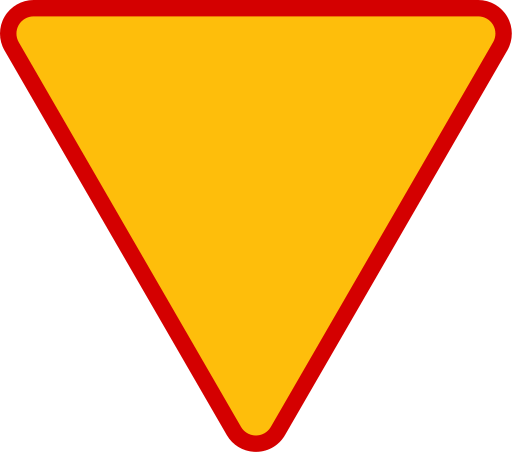
Give way
Warning
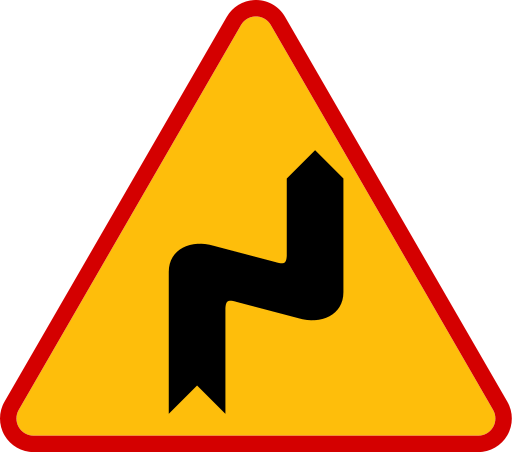
Series of curves
Prohibitory
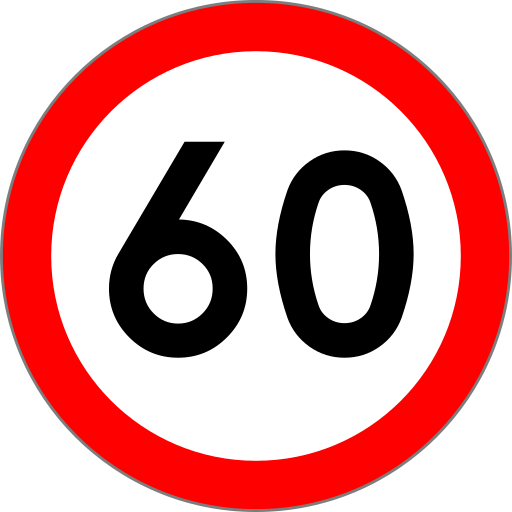
Speed limit
Indication
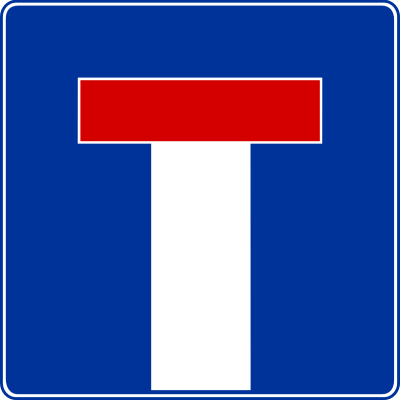
No through road
Mandatory

Turn right
Other important information for driving in Poland:
- Using your horn is prohibited in towns, except in emergencies
- If you have a sat nav with a speed camera detector, this function must be turned off
- All Polish motorways have tolls, which will vary in cost depending on the type of road, the distance you’ve travelled and the emissions category of your vehicle
Driving in Portugal
Side of the road: Right
Emergency phone number: 112
Minimum legal driving age: 18
Blood alcohol level limit in Portugal:
- New drivers (less than 3 years’ experience): 0.02%
- Experienced drivers: 0.05%
For reference, the UK blood alcohol level limit is 0.08%.
What are the speed limits in Portugal?
- Built-up areas: 50km/h
- Outside built-up areas: 90km/h – 100km/h depending on local signage
- Motorways: 120km/h
What documents do I need to drive in Portugal?
- Your full, valid UK driving licence
- Proof of ID (such as your passport)
- Motor insurance certificate
- Original V5c registration document (not a copy)
In the EU, Switzerland, Norway, Iceland, and Liechtenstein, you won’t need an IDP if you have a photocard driving license issued in the UK. You may need one if you have a paper driving licence, or your license was issued in Gibraltar, Guernsey, Jersey or the Isle of Man. Find out more here.
What do I need in my car in Portugal?
- A UK sticker – If your vehicle does not have a UK identifier within the number plate, you’ll need to display a UK (not GB) sticker
- A warning triangle – This is only compulsory for foreign-registered vehicles from countries where warning triangles are not compulsory
- Reflective jackets – You must keep them in easy reach and wear one if you have to exit your vehicle at the roadside following a breakdown or an accident
- Headlamp beam deflectors – UK headlights are angled for driving on the left, so you’ll need to deflect your beans to avoid dazzling other drivers
The Halfords Motoring Abroad kit contains everything you need to drive in most European countries, in one handy pack. It contains universal headlamp adaptors, a warning triangle, reflective vests, a UK sticker, and a first-aid kit, all in a handy storage bag with Velcro boot-fixing tabs.
Shop the Halfords Motoring Abroad Kit
Can I rent a car in Portugal?
- You must be at least 25 to hire a car in Portugal from most agencies, although some may rent to a younger driver for an extra charge
- You’ll need a full, valid UK driving license, as well as a second form of ID such as your passport
- You need to have held your license for at least 1 year
Portuguese road signs:
Across the EU, road signs are typically standardised according to the Vienna Convention, in order to make it easier and safer for foreign visitors. However, there will be some design differences.
Priority

Give way
Warning

Series of curves
Prohibitory

Speed limit
Indication

No through road
Mandatory

Turn right
Other important information for driving in Portugal:
- If you have a sat nav with a speed camera detector, this function must be turned off
- Children younger than 12 years old or below 135cm must sit in the back of the vehicle
- Your disability parking permit should be recognised in Portugal
Side of the road: Right
Emergency phone number: 112
Minimum legal driving age: 18
Blood alcohol level limit in Spain:
- New drivers (less than two years’ experience): 0.03%
- Experienced drivers: 0.05%
For reference, the UK blood alcohol level limit is 0.08%.
What are the speed limits in Spain?
- Motorways: 120 km/h
- Urban and rural roads: 90 km/h
- Built-up areas: 30 km/h
If you’re towing a caravan, the speed limits are different:
- Motorways: 80 km/h
- Single lane carriageways: 70 km/h
What documents do I need to drive in Spain?
- Your full, valid UK driving licence
- Proof of ID (such as your passport)
- Motor insurance certificate
- Original V5c registration document (not a copy)
In the EU, Switzerland, Norway, Iceland, and Liechtenstein, you won’t need an IDP if you have a photocard driving license issued in the UK. You may need one if you have a paper driving licence, or your license was issued in Gibraltar, Guernsey, Jersey or the Isle of Man. Find out more here.
What do I need in my car in Spain?
- A UK sticker – Vehicles registered in the UK must display a ‘UK’ (not GB) sticker, regardless of what’s on your number plate
- A warning triangle – If you break down, you’ll need to place it 50 feet from the back of your car
- Tyre repair – You’ll need either a spare wheel, run flat tyres, or the tools to handle a puncture, like a puncture repair kit
- One reflective jacket for each occupant – If you break down at the side of the road, you could be fined for not wearing a reflective jacket outside your vehicle
- Headlamp beam deflectors – UK headlight are angled for driving on the left, so you’ll need to deflect your beans to avoid dazzling other drivers
The Halfords Motoring Abroad kit contains everything you need to drive in most European countries, in one handy pack. It contains universal headlamp adaptors, a warning triangle, reflective vests, a UK sticker, and a first-aid kit, all in a handy storage bag with Velcro boot-fixing tabs.
Shop the Halfords Motoring Abroad Kit
Can I rent a car in Spain?
- You must be at least 21 to hire a car in Spain
- You’ll need a full, valid UK driving license, as well as a second form of ID such as your passport
- You’ll need to have held your license for over a year
Spanish road signs:
Across the EU, road signs are typically standardised according to the Vienna Convention, in order to make it easier and safer for foreign visitors. However, there will be some design differences.
Priority
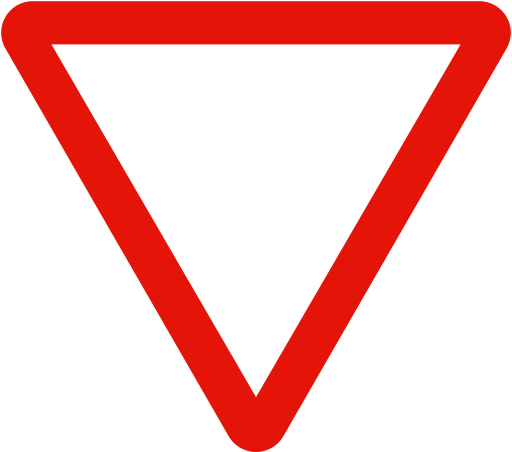
Give way
Warning
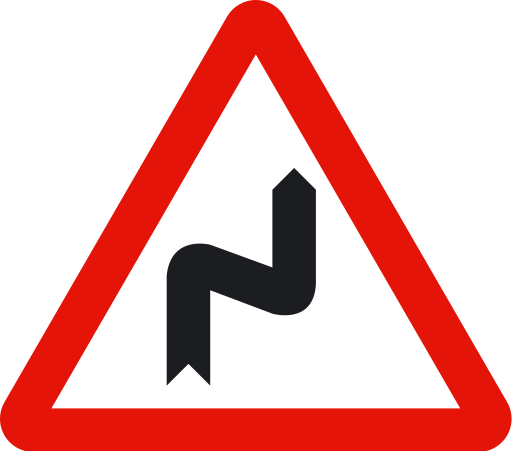
Series of curves
Prohibitory
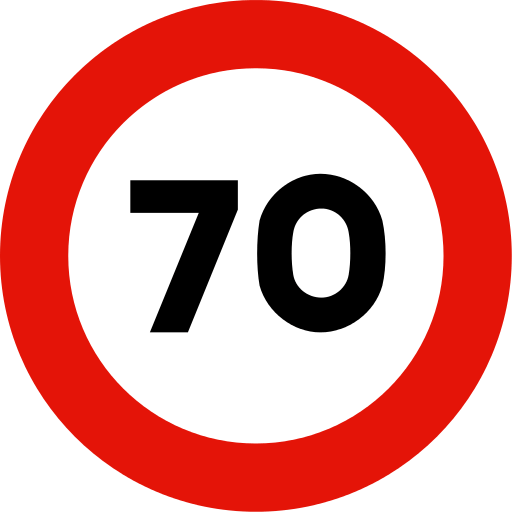
Speed limit
Indication
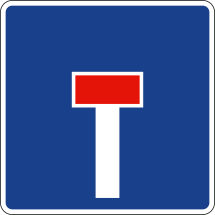
No through road
Mandatory
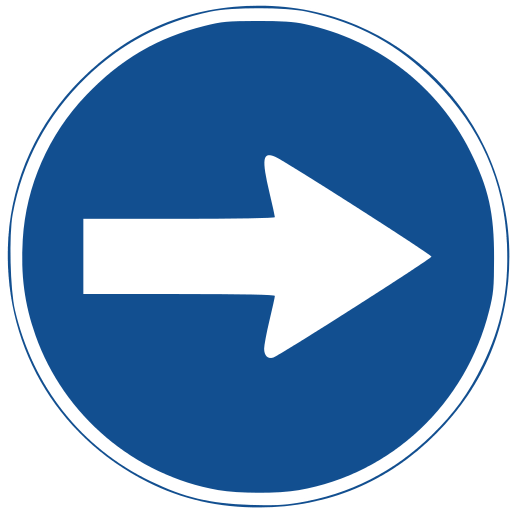
Turn right
Other important information for driving in Spain:
- Foreign disability parking permits can be used in Spain
- Motorcycles must have their lights on at all times
- Around a fifth of Spanish motorways will have toll booths
If you’re heading abroad, Halfords have a wide variety of travel accessories to keep your trip on track. Shop the full range at Halfords.com, or pop into your local Halfords store for some friendly advice from one of our experts.
02/23